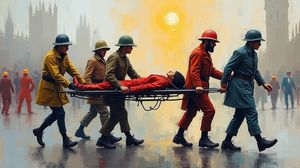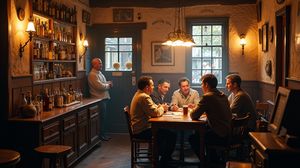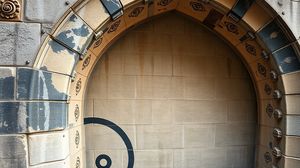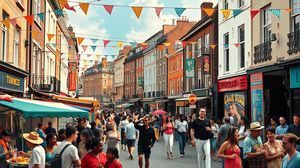
During World War II, over 600,000 steel stretchers were produced in London as part of the city's emergency response to air raids. These stretchers were designed to withstand challenging conditions, with metal frames for durability and easy decontamination, making them essential for the rescue of casualties during the Blitz.
After the war, when much of London's metal railings had been removed to support the war effort, city planners found a unique way to repurpose these surplus stretchers. They were welded together to form railings, creating a practical yet historically rich solution for areas needing new barriers.
These 'stretcher railings' can still be seen across various parts of London, including Peckham, Brixton, and Deptford. Their distinctive design, complete with the original curved handles, stands out, revealing the railings' previous life as wartime medical equipment. These handles often catch the eye of those who recognise their unusual shape, a subtle reminder of their past purpose.
Today, the stretcher railings serve as enduring symbols of London's resilience and resourcefulness. They are a fascinating piece of wartime history hidden in plain sight, blending seamlessly into the urban landscape while telling a story of repurposing and remembrance.

Making the Most of Your Visit:
If you want to see stretcher railings, head to areas like Peckham, Brixton, or Deptford. These are a bit off the usual tourist trail, but they'll give you a more authentic feel of London, and you'll stumble upon these historic railings while exploring local neighborhoods.
Keep an eye out for the distinctive curved handles when you're looking at the railings. They're the telltale sign that you've found stretcher railings, a piece of history that's hiding in plain sight among modern infrastructure.
It can be a bit of a treasure hunt, spotting them all. So consider taking a leisurely stroll or a cycling tour through the neighborhood to make it more of an adventure.
If you're into photography, the railings can make for some interesting shots, especially when paired with the urban backdrop of these areas. Try different angles to contrast the old with the new.
Chat with local historians or join a local history group online before visiting to gain insights. Some might offer stories or personal connections to the railings, enriching your understanding of this unique historical feature.

Visiting Times & Costs:
The "Stretcher Railings" can be seen in various locations around London, including Peckham, Brixton, and Deptford, and they are accessible to the public at all times. Since these railings are part of the urban landscape, there are no restrictions on visiting them.
Entrance to view the stretcher railings is free as they form part of the city's public infrastructure, with no associated costs.
In terms of accessibility, the railings are located in public spaces, so they are generally accessible. However, the level of accessibility may vary depending on the specific location, such as pavements or street conditions, which can differ from one area to another. Visitors with specific accessibility needs might consider researching the area or contacting local authorities for more detailed information on accessibility features in each location.

Address & Map:

Nearby:























